If you want to improve your life, where should you start?
Years ago, when I started working on myself, I tried lots of different things. Some helped a lot. But a lot didn’t matter. Filtering by trial-and-error works, but it can be slow and discouraging. Knowing what I know now, I’d recommend different practices to my younger self.
The typical person, if seriously committed, could make enormous improvements in their life in less than a year. But only if they build from the right foundation. If you’re interested in building a better life, but not sure where to start, here are my recommendations:
1. Establish an Airtight Productivity System.
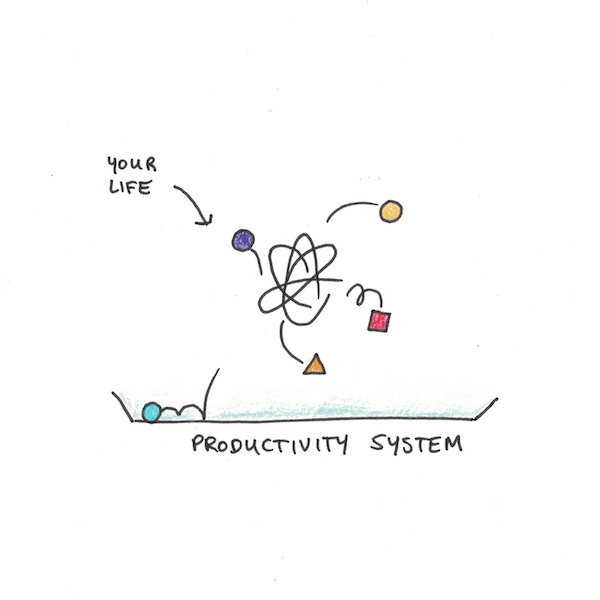
Productivity comes first. The mistake is in thinking that a productivity system is just about getting more work done. When in reality it’s about organizing all of your goals and efforts.
There are two problems people face when it comes to self-improvement:
- A lack of resources. You don’t feel you have enough time or energy to do all the things you think you should.
- A failure of follow-up. You set the intention to exercise every day, but three days later you’ve forgotten about it.
A productivity system, built correctly, solves both of these problems. It not only helps you keep a watchful eye over your limited resources, but it takes over the responsibility of remembering the stuff you intended to do.
The best book on productivity is David Allen’s Getting Things Done. His full system can be a bit too elaborate if you’re not a busy executive, but mastering the basics make a big difference.
2. Exercise Every Weekday.

Regular exercise is the easiest win you can make in your life. Getting exercise regularly has tons of health benefits, it makes your mind sharper and improves your mood. And unlike your relationships and career it’s entirely under your control.
While there are many different valid exercise schedules, I recommend starting with one that involves exercising every weekday, at the same time each day. Weekdays tend to be more consistent, so if you always exercise first thing in the morning, or right after work, it quickly becomes a habit.
A mistake I made in the beginning was having an inconsistent exercise schedule. I would exercise 3-4 times per week, but not on the same days. The result would be that if I skipped a day, it wasn’t necessarily a problem as I could still go tomorrow. Unfortunately, that resulted in more skipped days than I’d like.
Another problem can be needing 60-90 minutes to exercise. This makes it fall out of your schedule on days when you get too busy. I recommend focusing on 20-30 minutes, but of a high enough intensity that you get an ideal heart rate.
3. Read 30 Minutes, Each Day.

The most important thing you can do for any goal is to do the work. The second most important thing you can do is to read books about how to do it better.
Most of us read far too little. The typical American reads only four books per year. With the right reading practice, you can read that amount each month.
At minimum, however, you need to put in the time. Thirty minutes a day, especially if it fills the cracks in your schedule, is an amount that every person can do. You can definitely commit more, but you shouldn’t commit less.
Once you’re committed, the next step is to make reading as easy as possible. My tips:
- Get an Audible subscription and listen too. This expands the situations you can get those 30 minutes per day in.
- Buy lots of books. If you’re tight on budget, go to the library regularly and borrow a bunch of books.
- Don’t worry about getting to the end. The key is reading a lot. Trying to finish every book can be counterproductive if it keeps you from reading more.
- Always have a book with you. Get the Kindle app for your phone and delete your social media. You can read now instead of endlessly scrolling through crap that won’t improve your life.
4. Journal Weekly.
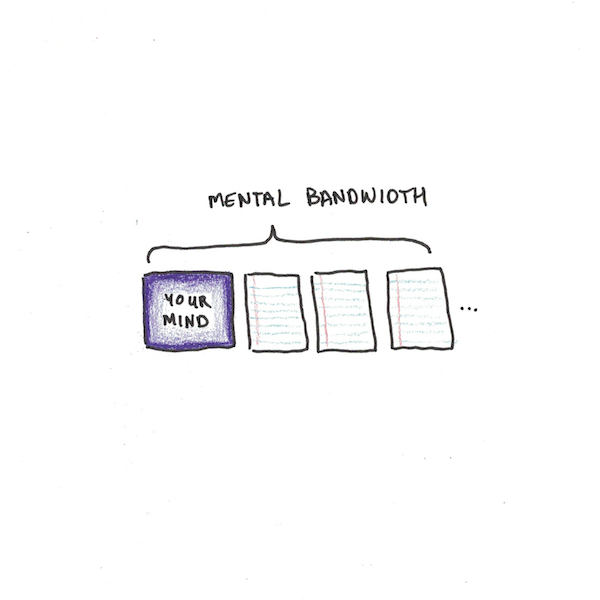
What if I told you that there was a technology that expanded the capacity of your mind. It allowed you to instantly offload items from the top of your head to be memorized perfectly, enabled you to see connections between items that weren’t visible before, and made you much smarter.
How much would such a tool be worth to you?
There’s no sales pitch here, because the technology I’m discussing is writing. Our working memory, perhaps the major component of intelligence, is fundamentally limited. Writing expands this by giving us a buffer to store thoughts before they fall out of our heads.
Writing also enables self-reflection. You can write down a long series of thoughts and then read it—allowing you to simultaneously articulate an idea and critique it.
All you need to take advantage of this tool is to get a notebook and commit to writing in it at least once per week. Write about your current struggles, ambitions or plans. Review your recent days and note what went right (or wrong) with your other foundational practices.
5. One Conversation Per Week with Someone Smarter Than You.
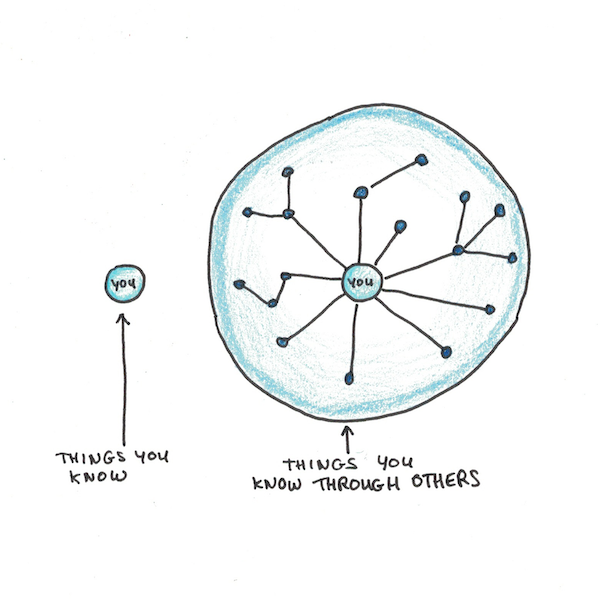
The biggest mistake I made in my early self-improvement was that it was too introverted. I exercised regularly, kept up my productivity system and read books… except when it came to reaching out to other people I fell behind.
You should set up a time to talk with someone who is ahead of you, in at least one dimension of their life, once per week. If you’re working on your career, you should chat with someone who is a few steps ahead of you professionally. If you’re working on your health, have a conversation with the person who is fit at the gym. If you’re learning something, talk to someone who has done it before.
The strange thing is, few people do this. They mostly stick with the people they bump into accidentally—colleagues, classmates or random encounters. As a result, they remain limited by the knowledge of the people they happen to know.
Reaching out to people (and maintaining conversations with people you respect) is an essential practice that’s easy to skip over if you’re not careful.
6. Track Every Purchase.

For years I used to write down on index cards whenever I spent money on anything. When money was tight, this practice was essential for getting the most out of it.
These days, you don’t need anything so tedious. I personally use a spreadsheet that I can quickly review and allocate spending into categories, but you can also use personal budgeting applications that will do this for you.
The informal approach, where you only check your bank account balance, is the financial equivalent to making decisions about what to work on by how busy you feel. It’s too crude to make the distinctions you need that will actually improve your life.
Being able to invest in yourself financially can make a big difference. The good life needn’t be expensive, but it can be easier to attain if you’re able to budget for it. I always saved money for buying books, for instance, even when I was too cheap to eat out.
7. Fence In All Your Vices.
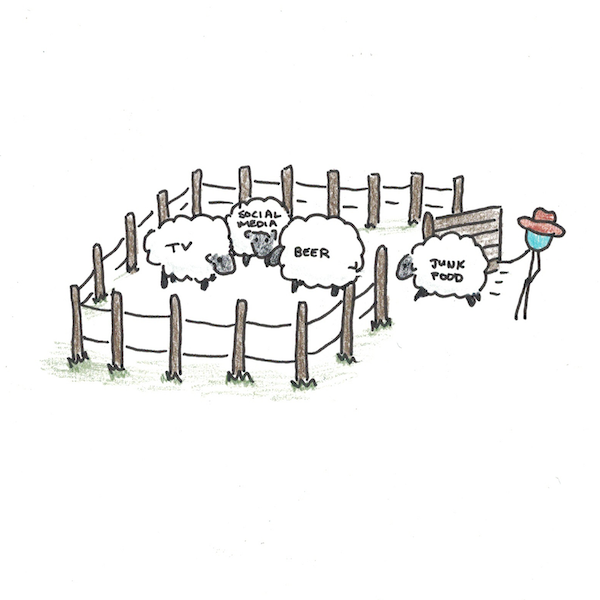
For many, the major obstacles to the good life aren’t the lack of a desire to change, but the abundance of temptations keeping us in the same spot. We watch too much television, play too many videogames, scroll Twitter all day. For others it might be drinking, smoking or eating junk food.
The simplest answer is simply to give all of these up. Abstain from everything that doesn’t make your life better. For some vices, this is probably the best answer—especially if you find you use them compulsively.
However, this austere solution may not be appealing or possible in all cases. I’d like to enjoy the occasional glass of wine or watch Netflix, even if I don’t want to be constantly binging either.
In this case, the foundational practice is setting up fences. Put up barriers that constrain the activity within predetermined limits. This can take a variety of forms, but the strength of the fence needs to be proportional to the temptation to jump over it:
- The most basic is simply a rule. “No more than two drinks in a night,” or, “Only one episode of television per day.”
- The next level is to use the power of consistent conditioning. Limit the number of triggering situations that encourage indulgence. “I only use social media on weekend mornings.” Now, you don’t even think of checking on Wednesday afternoon because it isn’t the context you normally do so.
- A step up is to set barriers that add friction to engaging. Leechblock can control social media websites. Timed switches can turn off electricity to your television outside the hours you want to watch it.
- Next is to set barriers you can’t easily overcome. Leechblock, but you give your friend the password, so you can’t disable it.
If these last steps don’t keep your indulgence in moderation, then usually abstinence is the only answer.
8. Wake Up on Time Every Morning.

Set yourself a bed time and a wake time. Then stick to it.
For many, this kind of foundational practice will already be reinforced. If you have kids, or if you work in a typical office setting, waking up on time isn’t optional. Yet the tendency to stay up too late, and thus being extra tired in the morning can still be a problem.
However, for students or people who work from home, consistent sleep schedules can be a major life upgrade. The reason is simple: consistent sleeping and waking allows you to predictably plan all the other things you intend to do. If you wanted to exercise each morning, but you sleep through it some days, you’ll never make progress.
Additional tweaks can make this practice even better:
- Don’t hit the snooze button. If you struggle with this, you can condition the practice of getting up immediately when you’re not actually sleeping to make it feel more natural when you’re groggy.
- Set aside the hour before bed for reading, journaling or quiet hobbies. This will make falling asleep on time easier and give you more energy consistently.
- If possible, keep the same wake time on weekends. If your work culture requires late night drinks with the team, or you’re single and want to socialize, this may not be ideal. However, if you can make it work, a consistent waking schedule is much easier to maintain than one which has you going to bed later and sleeping in on weekends.
9. Always Have a Major Project.
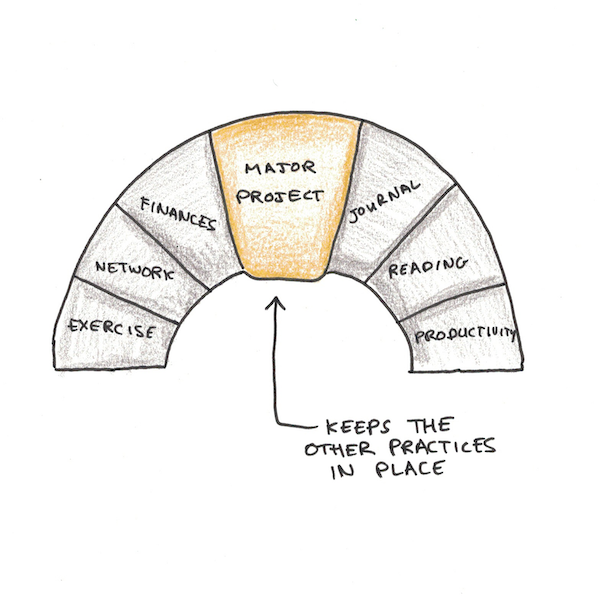
I prefer projects to goals. Goals are helpful, of course, but without a plan they’re often just fantasies. “Make a million dollars” doesn’t help unless it inspires concrete actions. “Start saving for retirement by putting away 10% of my income each year,” works much better.
Having a big project you’re always working on helps immensely to hold all the other foundational practices together. The problem with a lot of self-improvement efforts is that without some big ambition that necessitates them, they tend to fall apart in the slack. When you don’t need to wake up on time every day, why bother?
Just as a big deadline can get you over procrastinating, a big project can hold together the other practices.
Projects work best when you actually complete them. If you’ve had the habit of starting big efforts and not following-through, limit your projects to a couple months in scope at most to begin with. Even now, I find projects of 1-2 years to work best to maximize my efforts. Longer-term projects often feel too distant to compel motivation.
Which kinds of projects should you set? I tend to have four major types I rotate through:
- Career projects. New efforts to improve my professional life.
- Learning projects. These are bigger in scope than reading just a book, but don’t always reach the scale of my public challenges.
- Fitness projects. Getting stronger, leaner or otherwise preparing for a physical activity.
- Creative projects. Painting, programming, making or performing something.
This practice, sustained over years, can lead to the biggest result. Few people have the ability to work through independent projects to conclusion regularly, so those who do have an enormous advantage in being able to upgrade their life.
10. One New Experience Each Week.
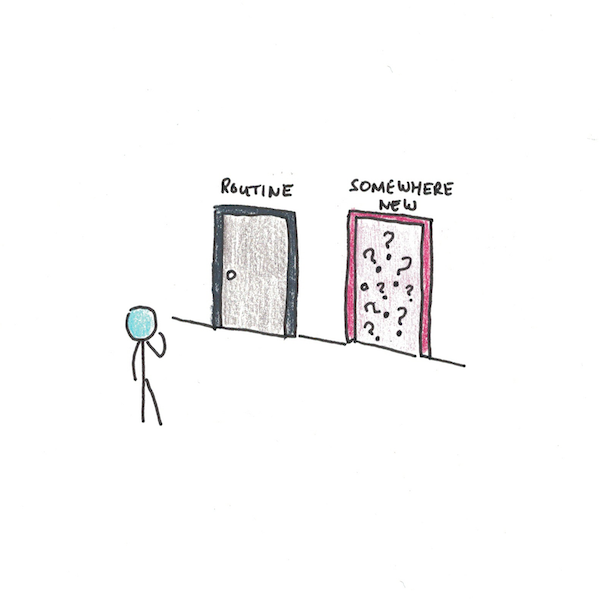
This could be a new restaurant (or cooking a new meal at home), a new activity, event or even walking in a part of town you’ve never been to before.
One problem of productivity is that as you get better at managing your time, you choose activities you know are rewarding. The problem is that this “locks in” the range of activities you’ve already uncovered. You tend to avoid trying new things that may be a waste of time, because they tend to feel lazy or unproductive.
This isn’t to say that the typical person is spontaneous and adventurous. Quite the opposite—habits and routines pull us all into an orbit of the familiar. It’s simply that productivity enthusiasts often make this tendency explicit.
If, however, you put randomness in your calendar, you’re more likely to reach it. Sometimes the wins are mild—you find out about a new restaurant you like, or discover a cool bookstore you didn’t know about—but other times the results can be profound. You might stumble into a meetup that introduces you to people who change your life.
A Six-Month Plan to Build Your Foundation
If I were starting my journey again today, I would spend six months building out each of these practices. While the length of time to get a good grasp on each practice can vary, I think it makes sense to focus on a couple at a time, rather than trying to simultaneously do all ten.
Thus, if you want to massively improve your life, I recommend:
- First month for a productivity system. Get this under your belt first.
- Second month for exercise and waking up on time. These two practices can fit directly together if you exercise in the morning. Even if you exercise later in the day, they can help synchronize your energy levels throughout the day. Of course, schedule both in your productivity system so you don’t forget.
- Third month for reading and journaling. Thirty minutes a day on the former, at least thirty minutes per week on the latter. Again, this can be part of your productivity system so you don’t forget. The two often synergize as reading exposes you to new ideas, and journaling allows you to retrieve and retain them.
- Fourth month for tracking spending. Once this practice is in place, you may want to invest more time in a serious personal finance plan—including making regular savings and budgeting for different life areas.
- Fifth month for fencing in vices. If you feel like you have a lot of compulsive habits that don’t add a lot of value, you may need to shift this up the schedule. However, I recommend putting the emphasis on the positive first, because if you eliminate everything without good alternatives, it may not be stable. You want to feel some pressure from all the things you want to do more of, not just the guilt that you waste too much time.
- Sixth month for scheduling conversations and doing new things. Now that you’ve built the base of a personal system, it’s worthwhile creating more practices that expose you to new opportunities, people and experiences. This tends to work better when you already have most of the other foundational pieces, as new ideas and connections are less valuable if your life is in disarray.
This six-month process, if undertaken seriously, is itself a kind of project. Thus, once I was done with this, starting on a new project might be my goal. Of course, six months is the most optimistic timeline—given that real life has plenty of disruptions and setbacks, a year may be more realistic.
However, even if it took you five years to build this foundation, it would give you a strong base for pursuing any other goal in your life. Whether you want to have a better career, get in really good shape or simply be happier, you’d be in the best position to get started.


 I'm a Wall Street Journal bestselling author, podcast host, computer programmer and an avid reader. Since 2006, I've published weekly essays on this website to help people like you learn and think better. My work has been featured in The New York Times, BBC, TEDx, Pocket, Business Insider and more. I don't promise I have all the answers, just a place to start.
I'm a Wall Street Journal bestselling author, podcast host, computer programmer and an avid reader. Since 2006, I've published weekly essays on this website to help people like you learn and think better. My work has been featured in The New York Times, BBC, TEDx, Pocket, Business Insider and more. I don't promise I have all the answers, just a place to start.